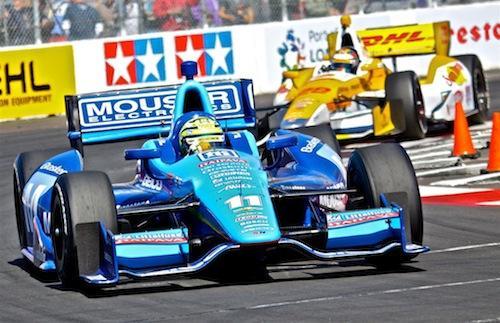When the cars take the track at the Indy 500 a few weeks from now, the margin of victory might be directly attributable to the person in the driver's seat. Or it might be related to an engineering detail so miniscule most spectators have never heard of it. "Sometimes the advantage comes from splitting hairs and extracting every last bit of performance out of the car," Eddie Jones, race engineer for KV Racing Technology, told us.
[Five engineers will win a free trip to the Indy 500. Enter by May 9 at Littelfuse's Speed2Design contest. ]
At Indianapolis these days, that's the only way a driver will get take the traditional swig from a bottle of milk after crossing the finish line. At this year's race, on May 27, all the teams will use the same chassis from Dallara Automobili. And they'll all employ an engine from one of three manufacturers: Chevrolet, Honda, or Lotus. Engine displacement, electronics, aerodynamics, batteries, dashboards, and countless other system configurations are spelled out for the teams in the 203-page 2012 IZOD IndyCar Series Rulebook (PDF).
"It's really not the way it used to be many years ago, where you could build your own car, choose your own engine within regulations, and then go out there and run," Jones said. "It's really changed over the last couple of decades."
 Tony Kanaan drove KV Racings No. 11 car at the Long Beach Grand Prix
Tony Kanaan drove KV Racings No. 11 car at the Long Beach Grand Prix
and will drive it again at the Indianapolis 500.
Previous:
Next :